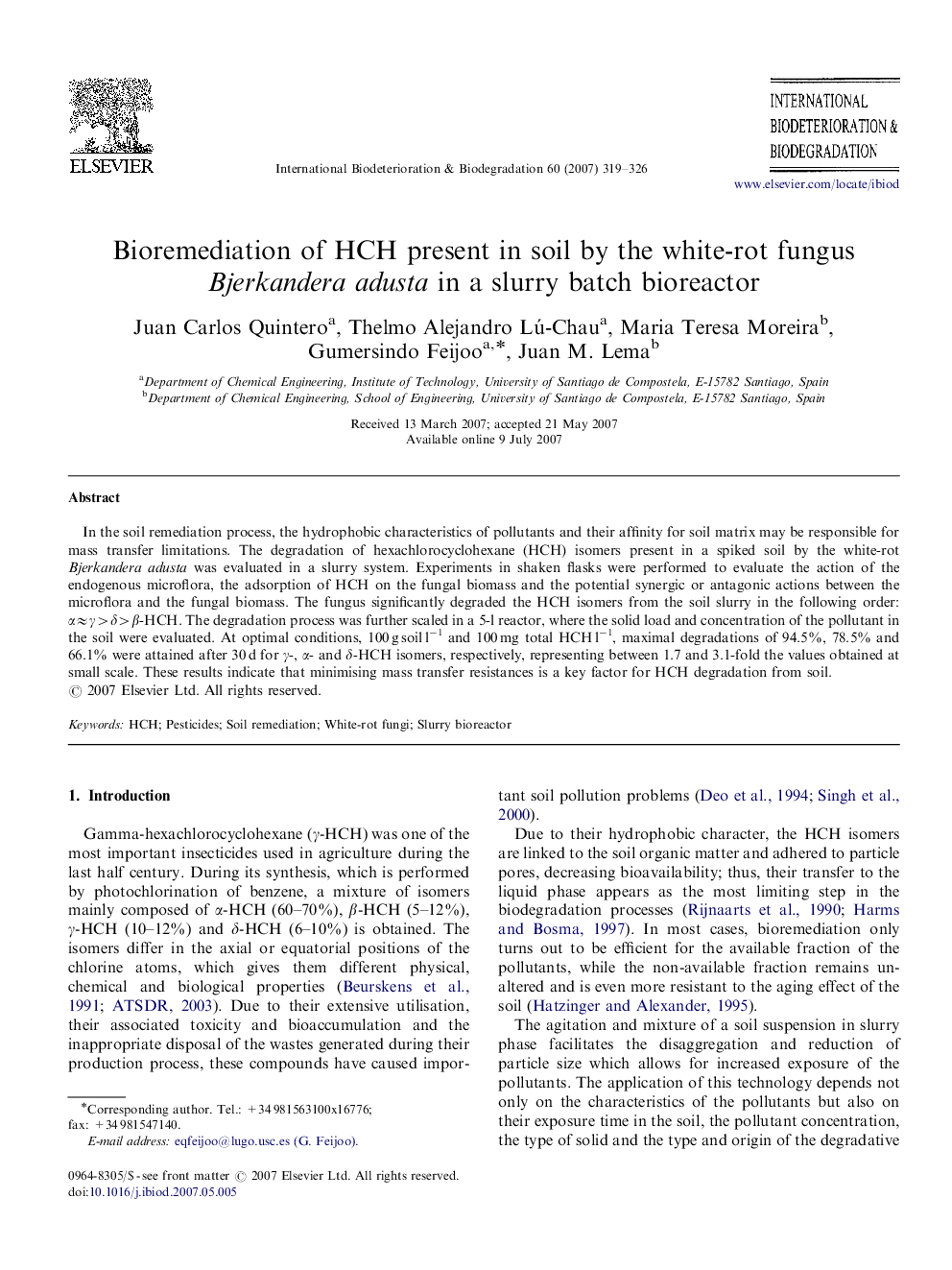| Article ID | Journal | Published Year | Pages | File Type |
|---|---|---|---|---|
| 4365823 | International Biodeterioration & Biodegradation | 2007 | 8 Pages |
In the soil remediation process, the hydrophobic characteristics of pollutants and their affinity for soil matrix may be responsible for mass transfer limitations. The degradation of hexachlorocyclohexane (HCH) isomers present in a spiked soil by the white-rot Bjerkandera adusta was evaluated in a slurry system. Experiments in shaken flasks were performed to evaluate the action of the endogenous microflora, the adsorption of HCH on the fungal biomass and the potential synergic or antagonic actions between the microflora and the fungal biomass. The fungus significantly degraded the HCH isomers from the soil slurry in the following order: α≈γ>δ>β-HCH. The degradation process was further scaled in a 5-l reactor, where the solid load and concentration of the pollutant in the soil were evaluated. At optimal conditions, 100 g soil l−1 and 100 mg total HCH l−1, maximal degradations of 94.5%, 78.5% and 66.1% were attained after 30 d for γ-, α- and δ-HCH isomers, respectively, representing between 1.7 and 3.1-fold the values obtained at small scale. These results indicate that minimising mass transfer resistances is a key factor for HCH degradation from soil.
